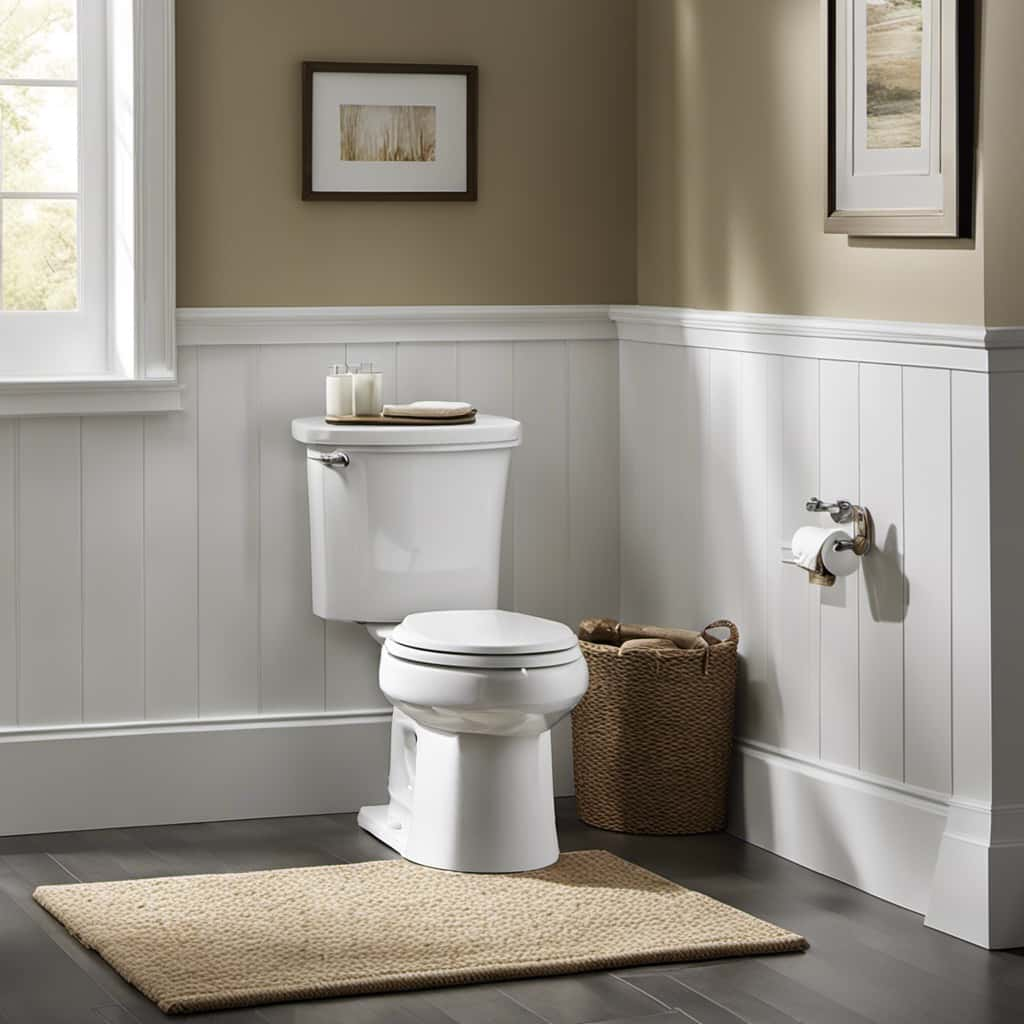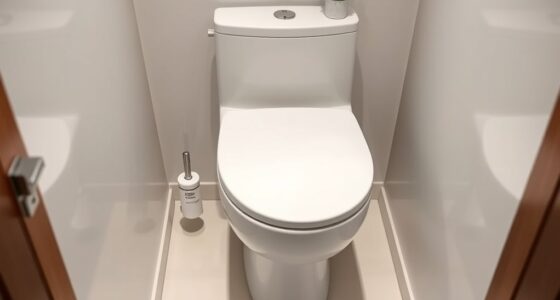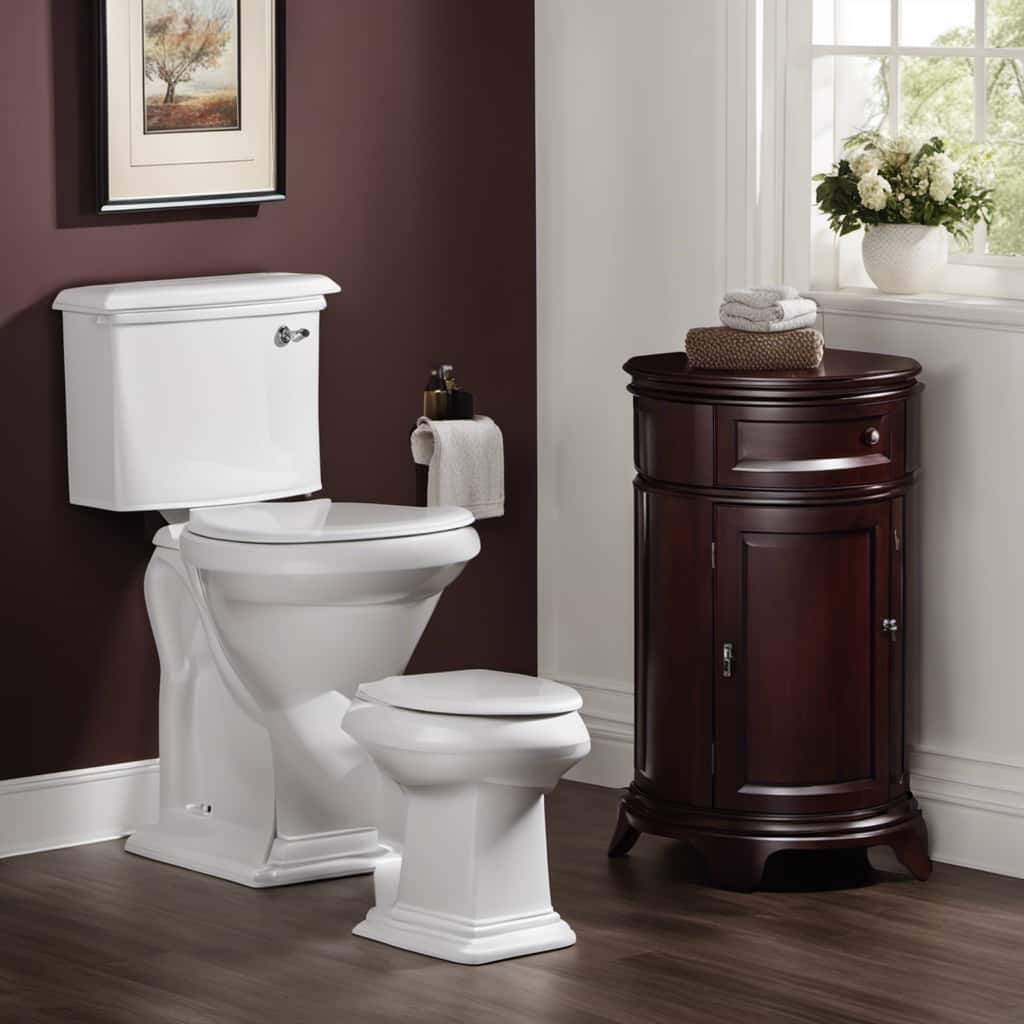Are you fed up with wrestling with a leaky toilet that appears to have a mind of its own? Don’t worry, we have the solution for you! Follow our detailed instructions to finally resolve this irritating issue.
Just imagine having a toilet that works flawlessly, without any annoying leaks or drips. In this article, we’ll show you exactly how to stop your toilet from leaking after flushing, so you can achieve true mastery over your plumbing.
Let’s get started!
Key Takeaways
- Checking for and fixing a loose flush valve: Turn off the water supply, flush the toilet to drain the tank, examine the flush valve assembly for looseness or damage, tighten the nut securing the flush valve or replace it if necessary.
- Replacing a faulty flapper: Turn off the water supply, remove the tank lid and flush the toilet to drain the water, disconnect the chain from the flush lever, remove the old flapper, install the new flapper and reconnect the chain.
- Adjusting the water level in the tank: Locate the water level adjustment screw or float adjustment clip, turn the screw clockwise to decrease the water level or counterclockwise to increase it, flush the toilet and observe the water level, make adjustments until the water level is about 1 inch below the top of the overflow tube, test the toilet by flushing it multiple times to ensure no leaks and consistent water level.
- Sealing leaks around the base of the toilet: Inspect the wax ring for cracks or wear, turn off the water supply and remove the toilet, replace the wax ring with a new one, reinstall the toilet and tighten the bolts evenly, test for leaks by turning on the water supply and flushing the toilet.
Common Causes of Toilet Leaks
One of the most common causes of toilet leaks is a faulty wax ring. Identifying hidden leaks is crucial in order to prevent further damage and water wastage. To do this, start by checking for any signs of water pooling around the base of the toilet or a persistent dampness on the floor.
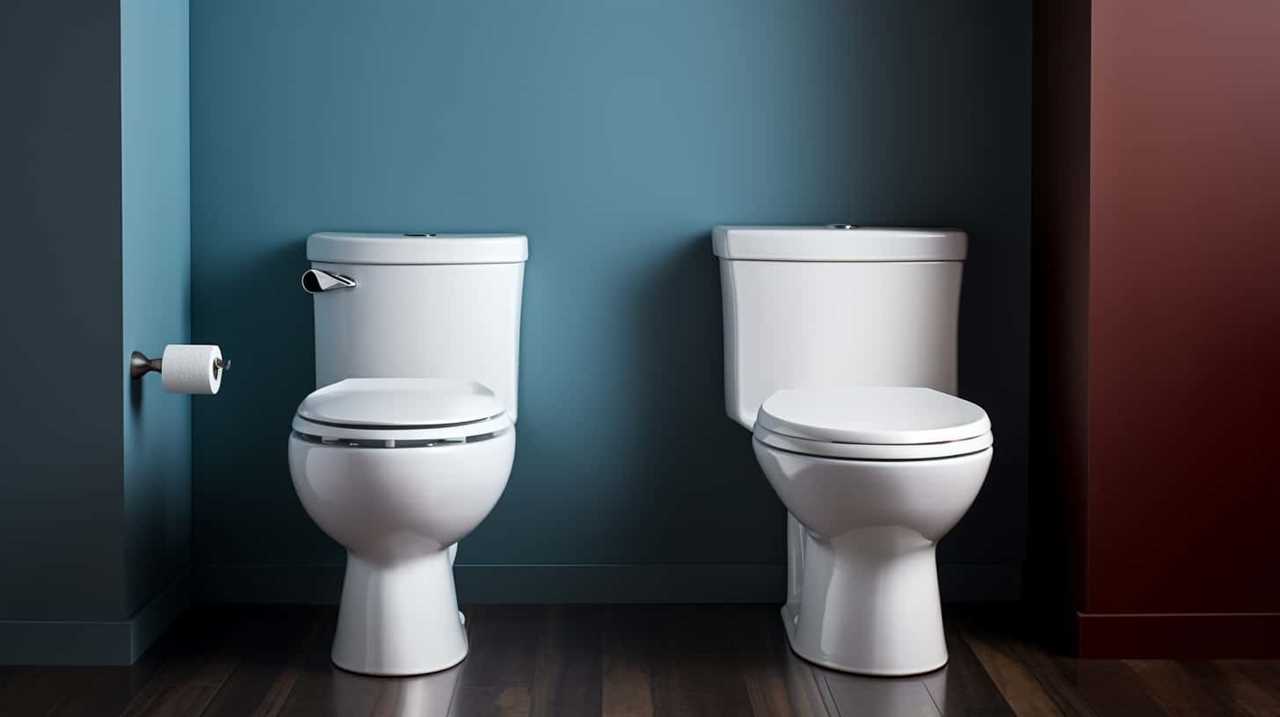
If you suspect a hidden leak, you can also add a few drops of food coloring to the toilet tank and wait for a few minutes. If the water in the bowl changes color without flushing, it indicates a leak.
When it comes to repairs, you might consider DIY options if you have the necessary skills and tools. However, for complex issues or if you’re unsure, it’s best to hire a professional plumber who can provide expert advice and ensure a proper fix.
Checking for and Fixing a Loose Flush Valve
To check for and fix a loose flush valve, we’ll need to inspect the toilet tank for any signs of movement or instability. Here’s how to troubleshoot and replace a flush valve:
- Turn off the water supply to the toilet by shutting off the valve located near the base.
- Flush the toilet to drain the water from the tank.
- Remove the tank lid and place it in a safe spot.
- Examine the flush valve assembly for any visible signs of looseness or damage.
- If the flush valve is loose, use an adjustable wrench to tighten the nut securing it to the bottom of the tank. Ensure it’s snug but not overly tight.
- If tightening the nut doesn’t solve the issue, it may be necessary to replace the flush valve. Consult the manufacturer’s instructions or seek professional assistance for guidance on replacing the flush valve.
Replacing a Faulty Flapper
After checking for and fixing a loose flush valve, the next step in addressing a toilet leak after flushing is to replace a faulty flapper. Troubleshooting flapper issues is crucial in maintaining a leak-free toilet. A faulty flapper can cause water to continuously flow from the tank to the bowl, resulting in wastage and potential water damage.
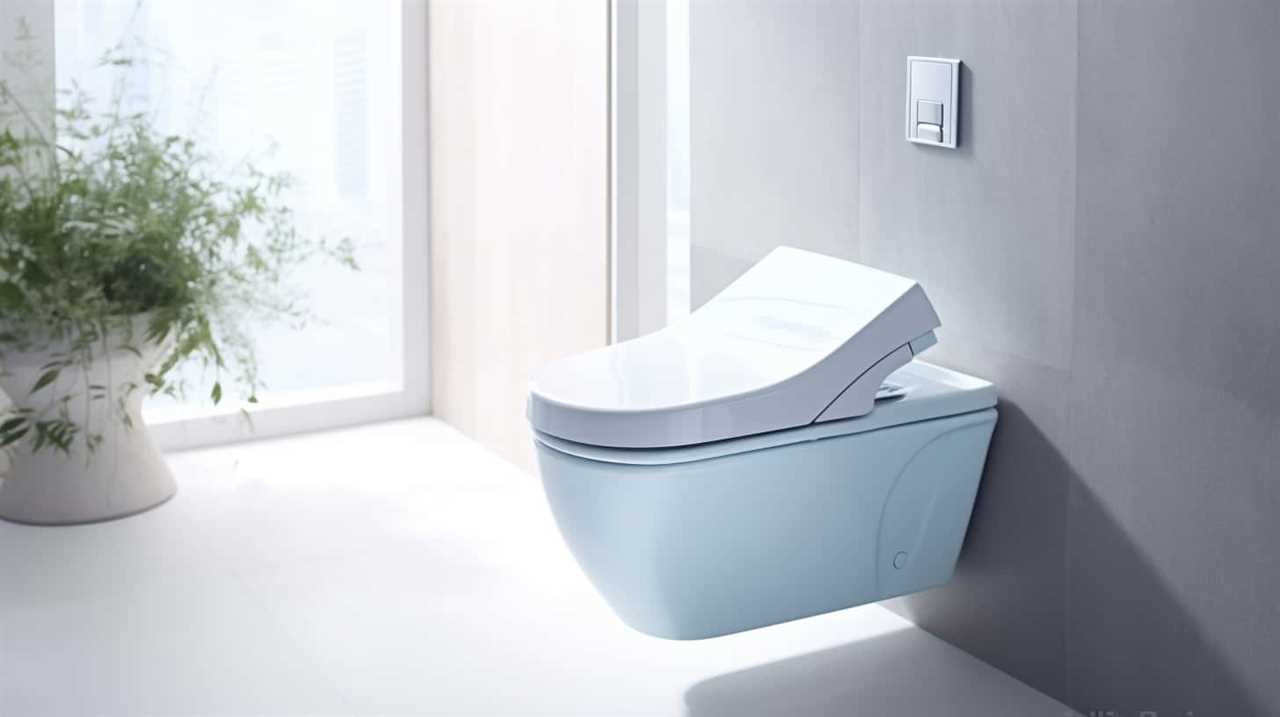
To replace the flapper, first, turn off the water supply to the toilet. Remove the tank lid and flush the toilet to drain the water. Disconnect the chain from the flush lever and remove the old flapper. Install the new flapper by attaching it to the flush valve opening and reconnect the chain. Finally, turn on the water supply and observe if the leak has been resolved.
Regular flapper maintenance is essential in preventing future leaks and ensuring the proper functioning of the toilet. Now, let’s move on to the next step – adjusting the water level in the tank.
Adjusting the Water Level in the Tank
Now, let’s address the water level in the tank to further prevent any potential leaks. Adjusting the water level in the tank is an important step in troubleshooting toilet tank leaks. By ensuring that the water level is set correctly, you can prevent overflow and reduce the risk of leaks. Here are some water level adjustment tips to follow:
| Step | Procedure |
|---|---|
| 1 | Locate the water level adjustment screw or float adjustment clip. |
| 2 | If using a screw, turn it clockwise to decrease the water level or counterclockwise to increase it. If using a clip, move it up or down accordingly. |
| 3 | Flush the toilet and observe the water level. Make adjustments as needed until the water level is about 1 inch below the top of the overflow tube. |
| 4 | Test the toilet by flushing it multiple times to ensure there are no leaks and that the water level remains consistent. |
Sealing Leaks Around the Base of the Toilet
Once the water level in the tank has been adjusted, it’s important to address any leaks around the base of the toilet. Here are some steps to help you seal those leaks and prevent further damage:
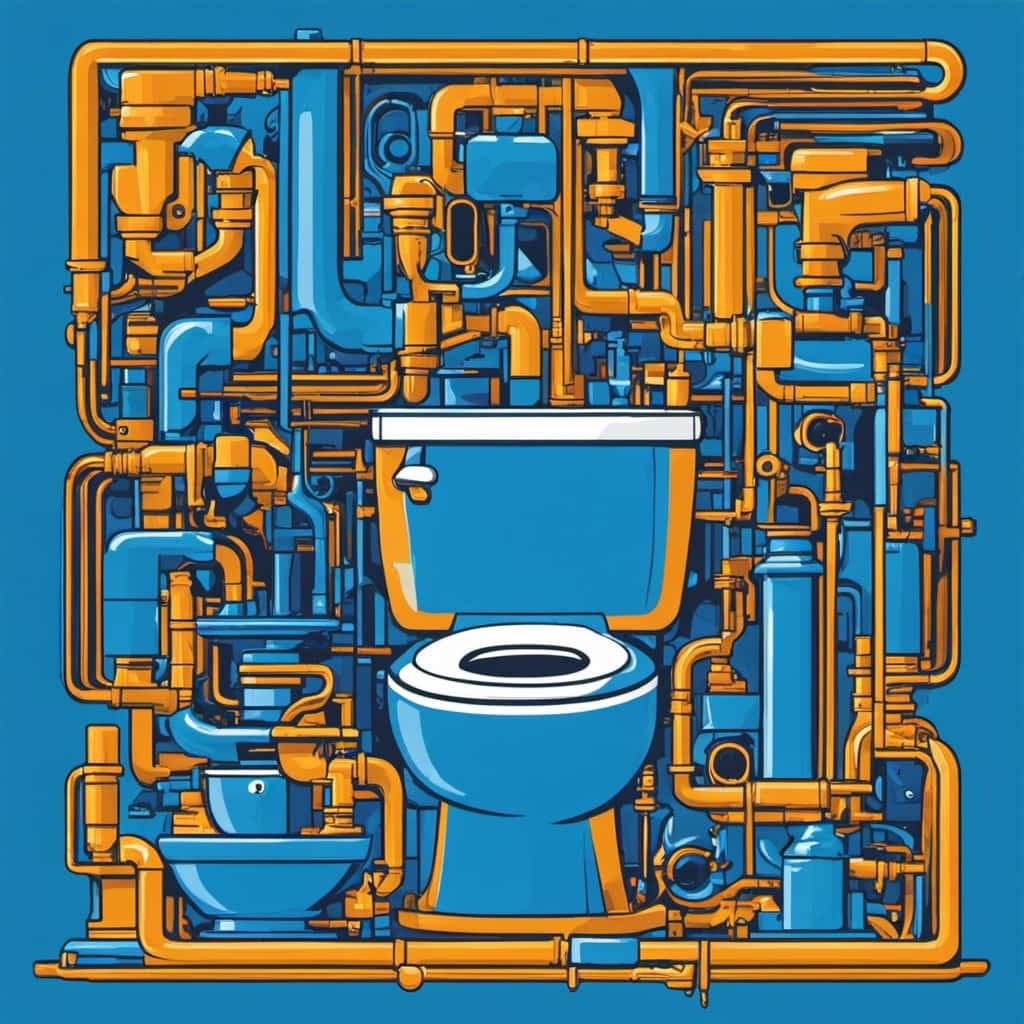
- Inspect the wax ring: The wax ring is located between the toilet base and the flange. If it’s cracked or worn out, it needs to be replaced.
- Prepare for replacement: Turn off the water supply to the toilet and flush to remove any remaining water. Remove the toilet by disconnecting the water supply line and unscrewing the bolts securing it to the floor.
- Replace the wax ring: Carefully remove the old wax ring and replace it with a new one. Make sure it’s centered on the flange and press it down firmly.
- Reinstall the toilet: Carefully lower the toilet onto the wax ring, ensuring that the bolts align with the holes on the base. Tighten the bolts evenly and reconnect the water supply line.
- Test for leaks: Turn on the water supply and flush the toilet. Check around the base for any signs of leaks. If there are no leaks, you have successfully sealed the toilet.
Frequently Asked Questions
How Do I Fix a Leaking Toilet Handle?
To fix a leaking toilet handle, first turn off the water supply valve. Remove the lid and locate the handle assembly. Tighten any loose screws or bolts. If that doesn’t work, consider replacing the handle and following the troubleshooting steps for leaking toilets.
Why Does My Toilet Only Leak After I Flush?
Toilet leaks after flushing are often caused by common plumbing issues. Identifying the root cause and addressing it step-by-step is key to stopping the leak. Let’s explore the possible reasons and solutions.
Can I Use a Temporary Fix to Stop the Toilet From Leaking Until I Can Get It Repaired?
If your toilet is leaking after flushing, you can try a temporary fix until you can get it repaired. Start by turning off the water supply, then replace the flapper or adjust the fill valve.
What Should I Do if My Toilet Continues to Leak After I Have Replaced the Flapper?
If our toilet continues to leak after replacing the flapper, we should check the water supply valve. Shutting it off and removing the tank lid, we can inspect the flush valve and make any necessary adjustments or replacements.
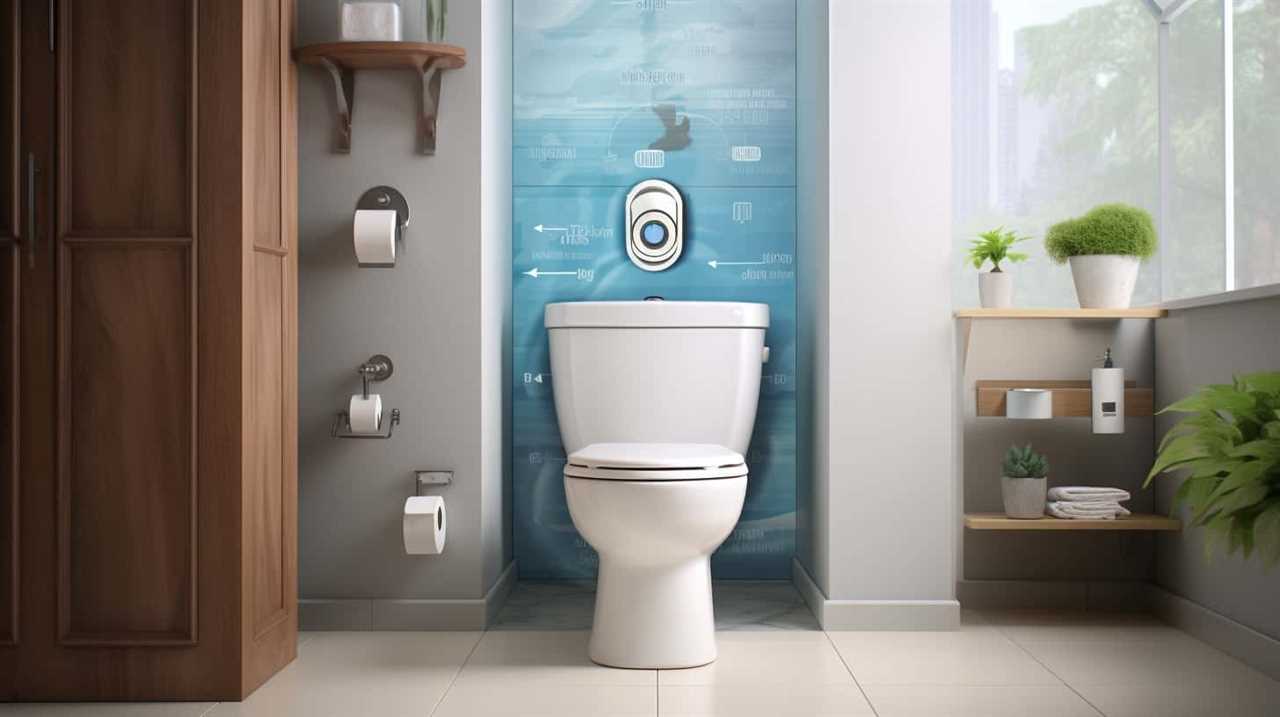
Are There Any Long-Term Solutions for Preventing Toilet Leaks?
Toilet leak prevention is crucial for effective toilet maintenance. By implementing a few long-term solutions, such as regular inspections, replacing worn-out parts, and ensuring proper water pressure, we can minimize the chances of leaks occurring after flushing.
Conclusion
In conclusion, by following these simple steps, you can put an end to the pesky issue of a leaking toilet after flushing.
With a little bit of effort and some basic tools, you can easily fix a loose flush valve, replace a faulty flapper, adjust the water level in the tank, and seal any leaks around the base of the toilet.
Soon, you’ll have a leak-free toilet that functions flawlessly.
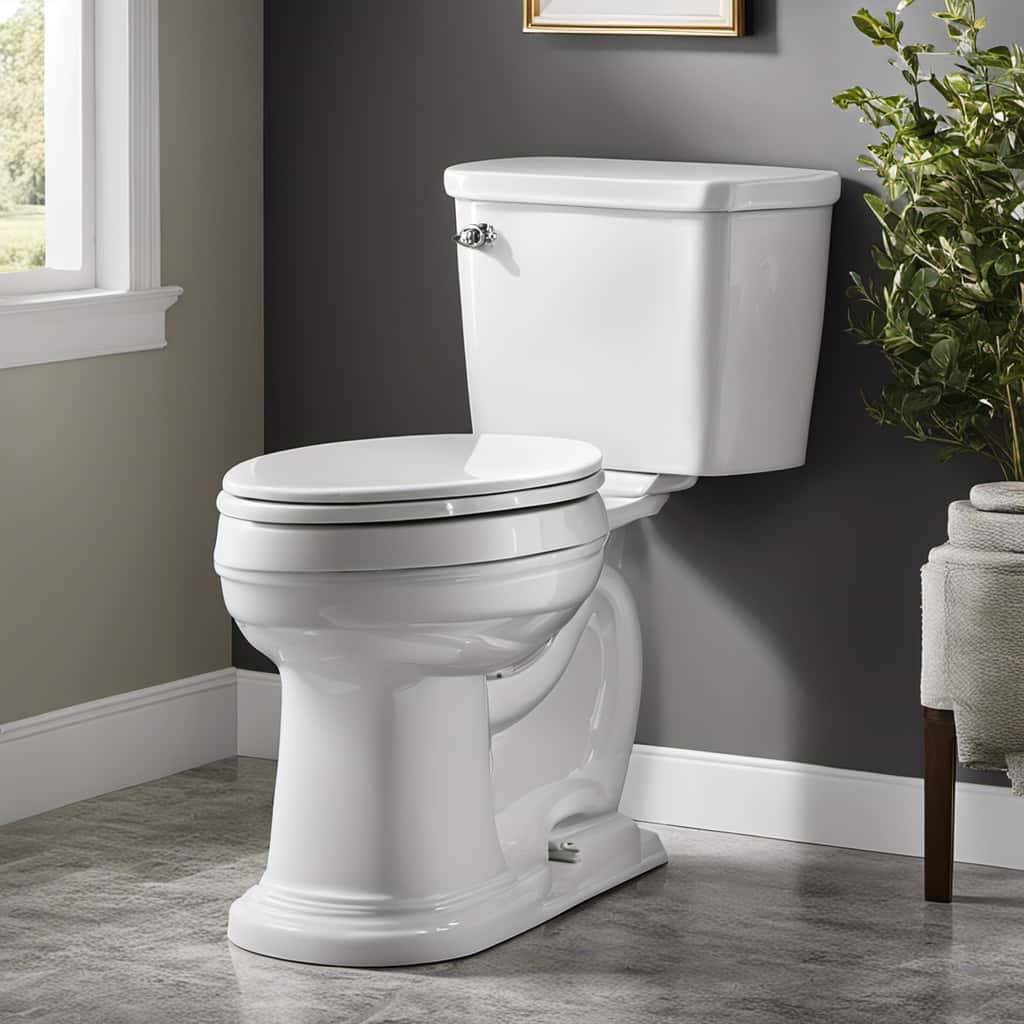
So, don’t let those leaks dampen your day, take action and enjoy a hassle-free bathroom experience!




